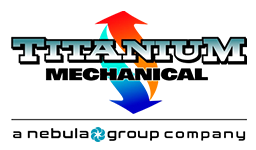Business operations depend on comfortable environments that keep employees productive and customers satisfied throughout the year. Commercial HVAC repair Toronto companies provide rapid response services that minimize downtime and restore normal operations quickly. System failures during peak business hours cost money through lost productivity and unhappy customers.
Common System Problems
Equipment breakdowns follow predictable patterns that experienced technicians recognize and address efficiently. Commercial HVAC repair Toronto professionals encounter these issues regularly and develop proven solutions for fast resolution. Understanding common problems helps business owners identify issues early and prevent major system failures.
Refrigerant leaks reduce cooling capacity while increasing energy consumption significantly. These problems often develop gradually until system performance becomes noticeably poor. Low refrigerant levels force compressors to work harder, which leads to premature equipment failure and expensive replacements.
Rapid Diagnosis Techniques
Professional technicians use specialized tools and testing procedures to identify problems quickly without extensive disassembly. Digital meters measure electrical values, pressures, and temperatures that reveal system condition accurately. These diagnostic methods save time compared to trial-and-error troubleshooting approaches.
Visual inspections often reveal obvious problems like damaged belts, loose connections, or blocked filters. Experienced technicians spot subtle signs that indicate developing problems before they cause complete system failures. This expertise prevents emergency situations that disrupt business operations.
Priority Repair Strategies
Critical systems receive immediate attention to restore basic comfort levels for building occupants. Emergency repairs focus on getting systems operational rather than achieving perfect performance initially. Follow-up visits complete comprehensive repairs once immediate comfort needs are met.
Temporary solutions maintain operations while ordering replacement parts or scheduling major repairs during off-hours. Portable equipment provides backup cooling or heating when primary systems need extensive work. These strategies minimize business disruption during repair periods.
Parts and Equipment Availability
Local suppliers stock common replacement parts for major commercial equipment brands and models. Quick access to filters, belts, contactors, and other frequently needed components speeds repair completion times significantly. Technicians often carry basic parts in service vehicles for immediate repairs.
Overnight shipping brings specialized components from manufacturers or regional distributors when local sources lack specific items. Emergency parts ordering costs more but prevents extended downtime that affects business operations. Balance rush charges against lost revenue from extended system failures.
Preventive Maintenance Benefits
Regular service visits identify potential problems before they cause system failures during critical periods. Scheduled maintenance costs less than emergency repairs and prevents productivity losses from uncomfortable working conditions. Professional maintenance extends equipment life and maintains warranty coverage.
Filter changes, belt adjustments, and lubrication take minimal time but prevent major problems from developing. Clean systems operate more efficiently and provide better comfort levels for building occupants. These basic services often prevent expensive emergency service calls.
Energy Efficiency Improvements
System tune-ups restore original performance levels while reducing energy consumption compared to neglected equipment. Proper refrigerant levels, clean coils, and calibrated controls optimize system operation automatically. These improvements lower utility bills while providing better comfort control.
• Replace worn belts that slip and waste energy • Clean condenser coils that restrict heat transfer • Calibrate thermostats for accurate temperature control • Seal ductwork leaks that waste conditioned air • Update controls systems for improved efficiency
Emergency Service Response
Twenty-four hour availability addresses system failures that occur outside normal business hours when building occupants still need comfortable environments. Weekend and holiday coverage prevents minor problems from becoming major issues through neglect. Fast response times minimize discomfort and business disruption.
Service trucks carry common parts, tools, and testing equipment needed for most repair situations. Technicians can complete many repairs during initial service calls without return visits for parts or equipment. This efficiency reduces total repair time and costs.
Cost Management Approaches
Flat-rate pricing provides predictable costs for common repair procedures without hourly charges that vary based on completion time. These fixed prices help business owners budget for maintenance expenses accurately. Emergency services typically cost more than scheduled repairs during normal hours.
Service contracts spread maintenance costs evenly throughout the year while providing priority response during emergencies. Contract customers often receive discounted parts and labor rates compared to occasional service calls. These agreements encourage regular maintenance that prevents expensive emergency repairs.
Working with Service Companies
Established companies maintain trained technicians who understand commercial equipment operation and repair procedures thoroughly. They carry insurance coverage that protects your business from liability during service work. Choose companies with strong local reputations and proven track records.
Emergency response capabilities include sufficient staffing to handle multiple simultaneous service calls during peak demand periods. Ask about guaranteed response times and backup plans when primary technicians are unavailable. Reliable service partnerships prevent extended system downtime.
Long-Term Planning Considerations
System replacement planning prevents emergency situations when aging equipment finally fails completely. Budget for major component replacements based on expected service life and current condition assessments. Proactive replacement costs less than emergency installations during system failures.

